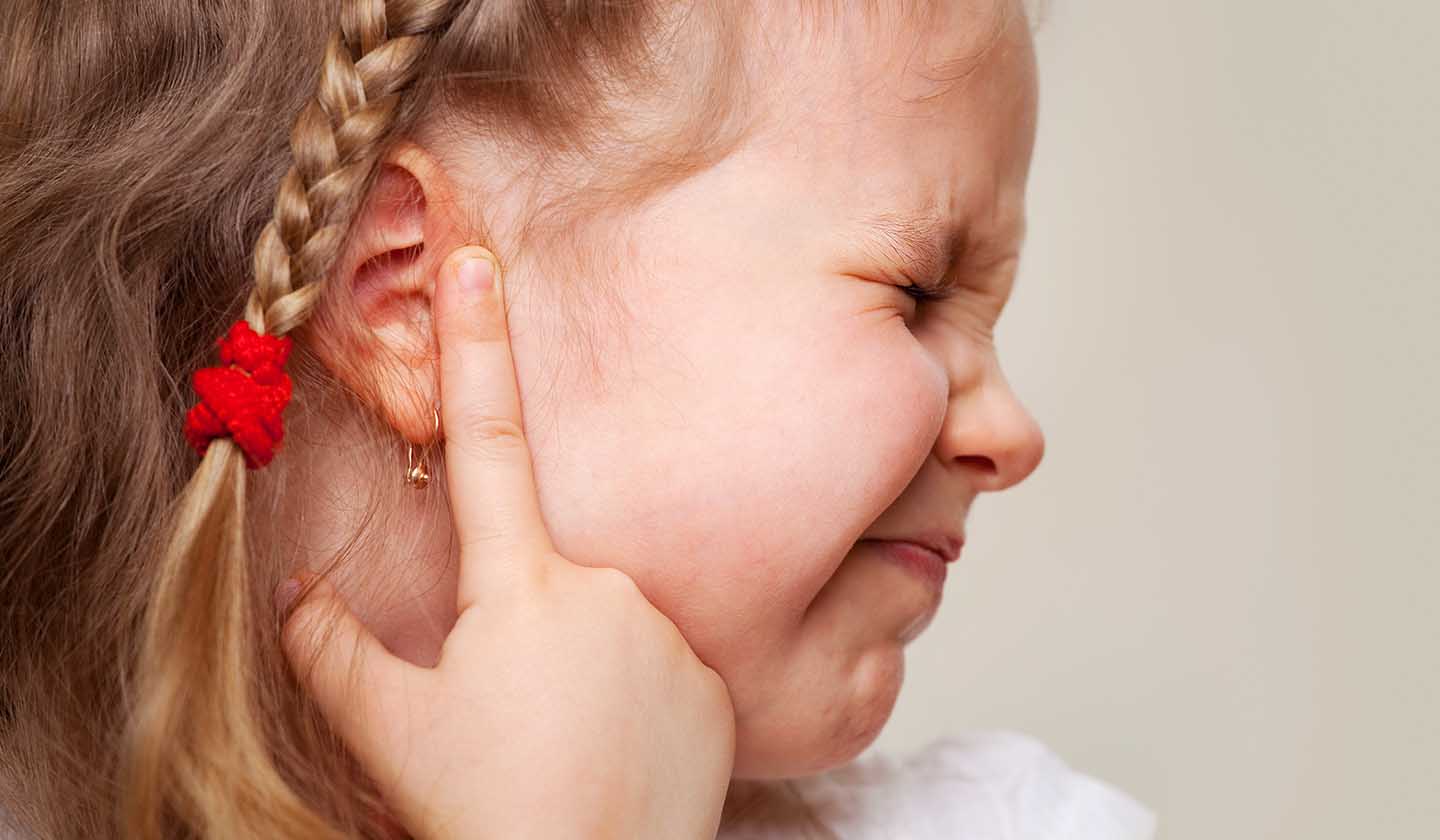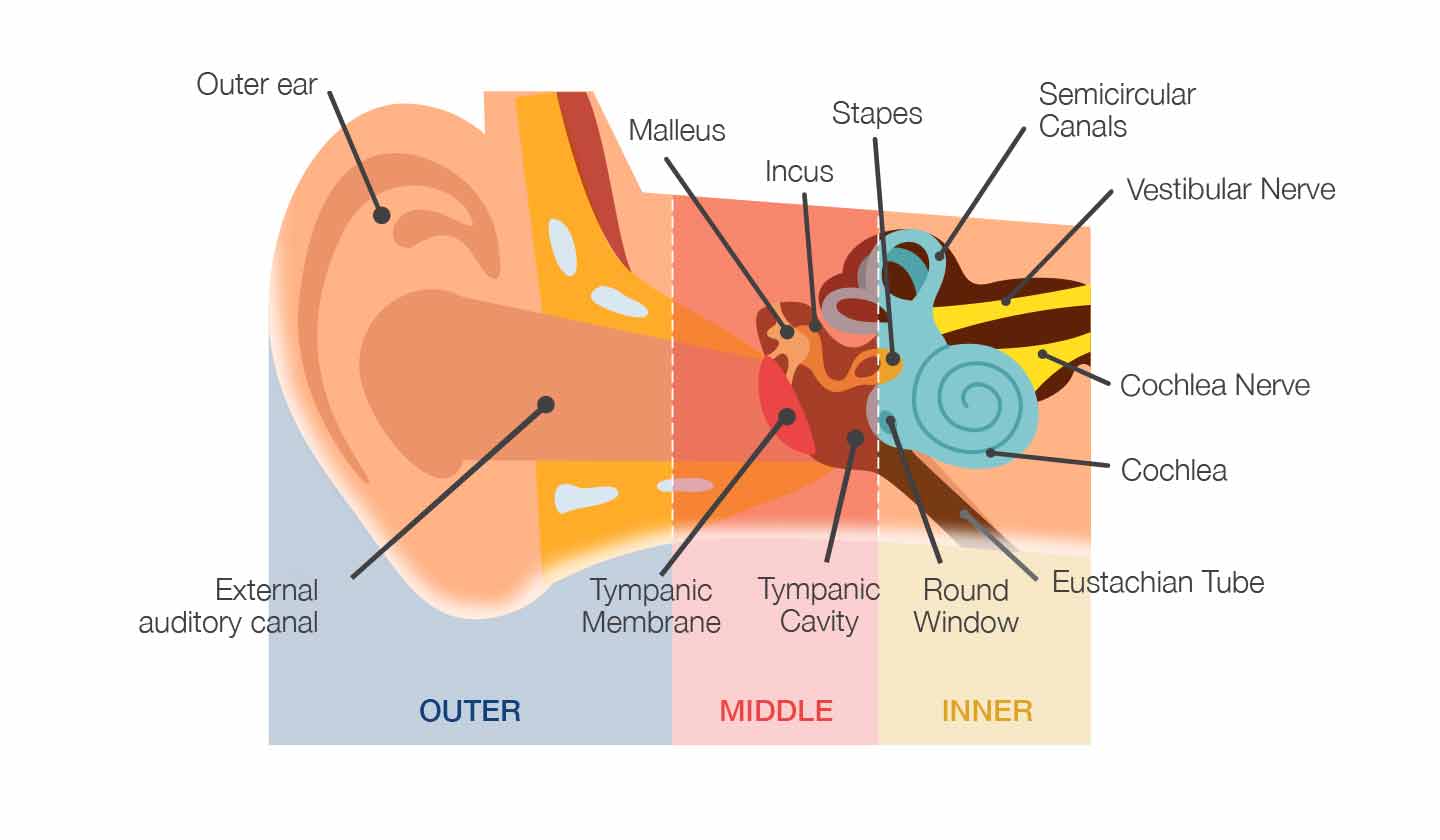Infections
Earache - Speak quietly

Ear pain is very bothersome, and it occurs frequently in children Prevention is the best choice: avoid risk factors and learn how to act if pain develops.

A vulnerable organ
The ears are a sensitive organ: they are poorly protected, which makes them susceptible to situations such as excessive noise, differences in atmospheric pressure, viruses, bacteria, and pollution. These are the main risk factors associated with ear pain, a common health problem, which mainly affects children up to three years old. The reason lies in the anatomy of the organ itself. The ear consists of three parts:
- The external ear, which includes the ear and the ear canal;
- The middle ear, which includes the eardrum and a small air chamber;
- The inner ear made up of the organs of hearing and balance.
A channel (the Eustachian tube), through which fluids are drained into the nose, runs between the middle ear and the upper throat. Most of the time the discomfort starts when this channel is blocked. In the accumulated fluids, bacteria or viruses develop that can cause infections - ear infections.

Special care - Children
In children, the Eustachian tube is shorter and narrower than in adults, and the adenoids (two glands located near the Eustachian tube) are relatively larger: hence there is greater vulnerability to pain and ear infections.
Some conditions are riskier. When the child is less than two years old; has a family history of ear infections; has an allergy and / or a frequent cold; shares closed spaces with many children; is exposed to polluted environments, such as tobacco; is not breastfed (as during this period breast milk has antibodies that help prevent infections).

Beyond pain
Pain (in one ear or both) is the main symptom, but when accompanied by: fever, lack of appetite, irritability, changes in sleep pattern, discharge of pus through the ear canal or difficulty in hearing, it can be a sign of acute otitis.
On the other hand, wax can be a problem. Sometimes, wax builds up in the ears and can cause a strange sensation, an apparent deafness and skin irritation, in your ear canal.
In milder conditions, the problem solves itself. But the pain can be very intense, so you may need to relieve it:
- Applying warm compresses over the ear;
- Taking a painkiller - usually paracetamol or ibuprofen, never aspirin when it comes to a child under the age of 12.
In the presence of an earache, parents may think that an antibiotic is needed. However, it is not always the best medicine: it should only be used, under medical advice, when there is a bacterial infection (caused by bacteria and not viruses). If, in addition to earache, you have diabetes, hoarseness, difficulty swallowing, nasal obstruction (stuffy nose), fluid coming out of the ear, flushing (redness) or inflammation behind the ear, you should talk to your doctor.

Protect your ears
To minimise risk:
- Clean the ears carefully and avoid inserting any object in the ears;
- Avoid polluted environments;
- Treat respiratory infections correctly;
- Wear ear protection if you are swimming or diving;
- If you have ear problems, wear ear protection whenever you travel by plane.
Some vaccines included in the Portuguese National Vaccination Program can reduce the risk of ear infections in childhood.
Sources
iSaúde
Farmácia Distribuição Magazine
Também lhe poderá interessar
Nervous system
What about when your head explodes and all you want is dark and quiet?
Infections






